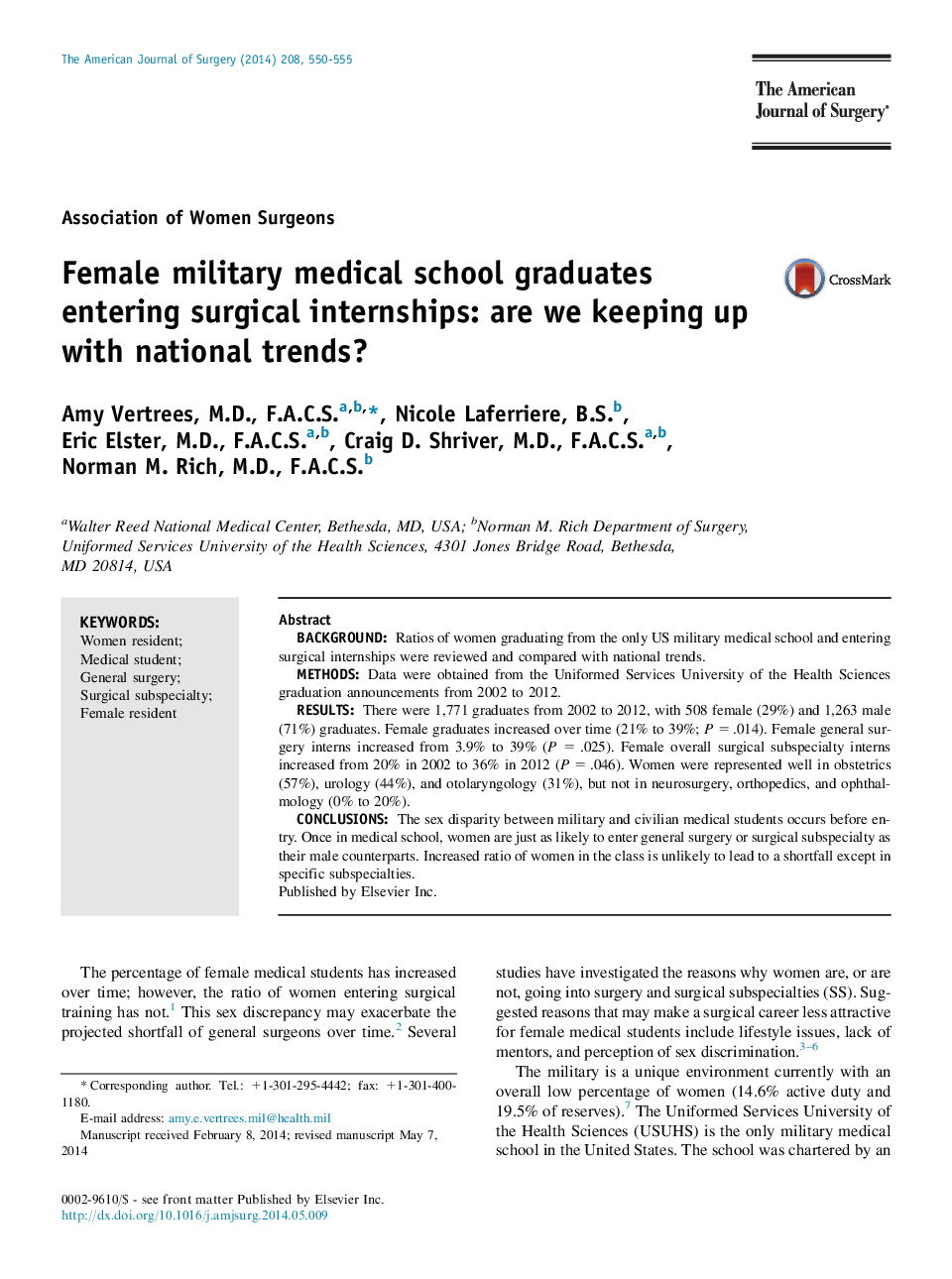| Article ID | Journal | Published Year | Pages | File Type |
|---|---|---|---|---|
| 4278957 | The American Journal of Surgery | 2014 | 6 Pages |
BackgroundRatios of women graduating from the only US military medical school and entering surgical internships were reviewed and compared with national trends.MethodsData were obtained from the Uniformed Services University of the Health Sciences graduation announcements from 2002 to 2012.ResultsThere were 1,771 graduates from 2002 to 2012, with 508 female (29%) and 1,263 male (71%) graduates. Female graduates increased over time (21% to 39%; P = .014). Female general surgery interns increased from 3.9% to 39% (P = .025). Female overall surgical subspecialty interns increased from 20% in 2002 to 36% in 2012 (P = .046). Women were represented well in obstetrics (57%), urology (44%), and otolaryngology (31%), but not in neurosurgery, orthopedics, and ophthalmology (0% to 20%).ConclusionsThe sex disparity between military and civilian medical students occurs before entry. Once in medical school, women are just as likely to enter general surgery or surgical subspecialty as their male counterparts. Increased ratio of women in the class is unlikely to lead to a shortfall except in specific subspecialties.
